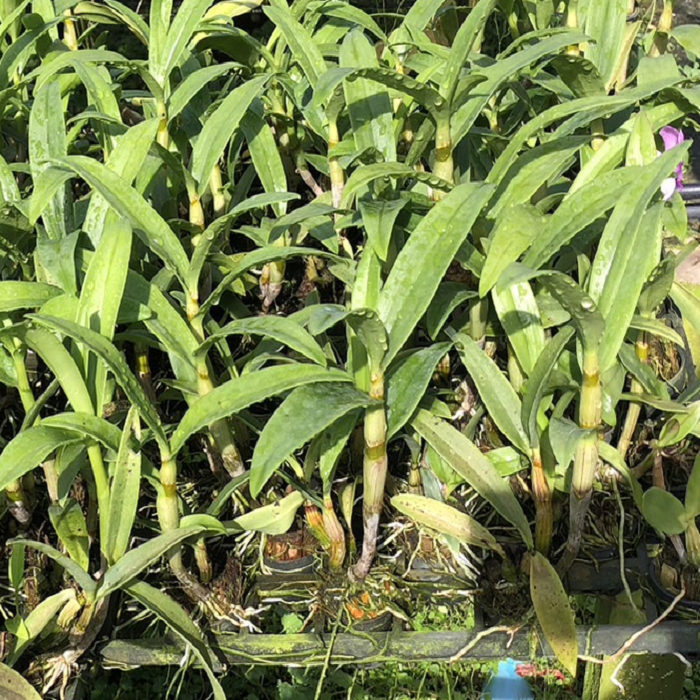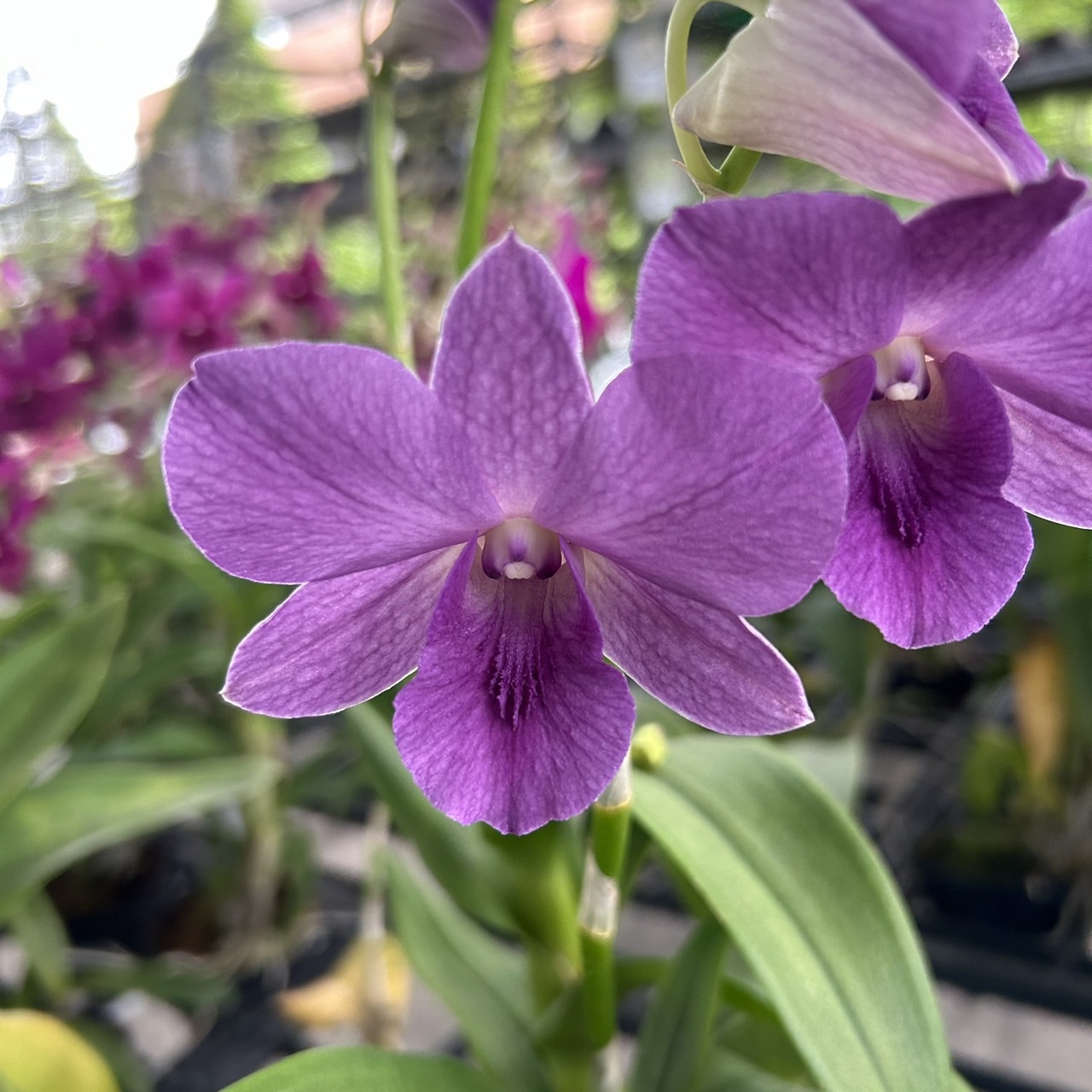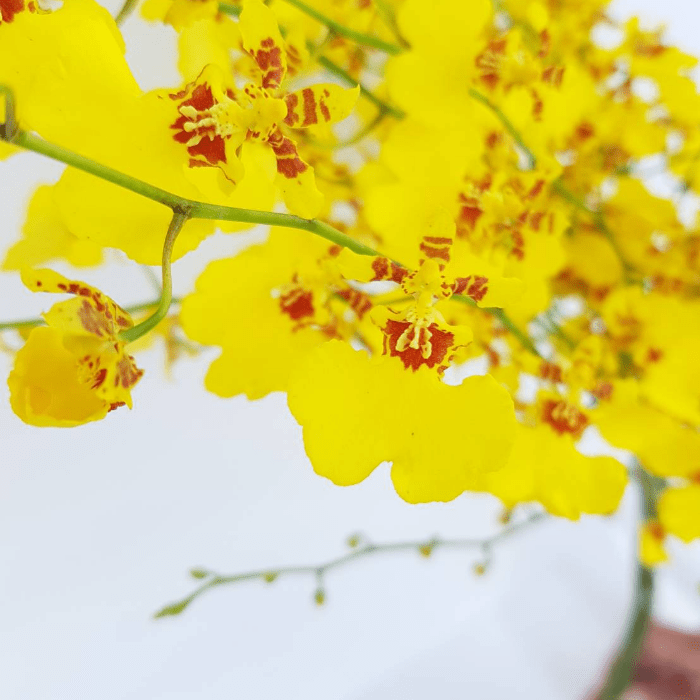Orchid leaves can turn yellow for a variety of reasons, including:
- Overwatering: Orchids are sensitive to overwatering, and if their roots are constantly sitting in wet soil or water, the leaves can turn yellow and eventually fall off.
- Underwatering: On the other hand, if orchids are not watered enough, their leaves can also turn yellow. It’s important to keep the soil or growing medium slightly moist, but not soggy.
- Lack of light: Orchids need sufficient light to grow and thrive. If they don’t get enough light, their leaves can turn yellow and the plant can become weak.
- Pest infestation: Pests such as spider mites, mealybugs, and scale insects can attack orchids and cause yellowing of the leaves. 5. Disease: Some diseases, such as root rot and bacterial infections, can cause orchid leaves to turn yellow.
To prevent yellowing of orchid leaves, it’s important to provide them with the right amount of water, light, and nutrients, and to regularly check for pests and diseases. If yellowing persists, it may be helpful to consult a specialist or experienced orchid grower for further advice.
How to solve orchid leave turn yellow problem?
Yellow leaves on orchids can be a sign of various problems, including overwatering, underwatering, pest infestations, or fungal or bacterial infections. Here are some steps you can take to address the issue:
- Check the roots: Lift the orchid out of its pot and examine the roots. If they are brown and mushy, the plant may be suffering from root rot due to overwatering. Trim off any dead roots and repot the orchid in fresh, well-draining potting mix.
- Watering: Make sure you are watering your orchid properly. Orchids need to be watered regularly but not excessively. Allow the potting mix to dry out slightly between waterings, and avoid letting the plant sit in standing water.
- Lighting: Check the lighting conditions of your orchid. Yellow leaves can also be a sign of too much or too little light. Orchids generally prefer bright, indirect light.
- Pests and disease: Check for any signs of pest infestations, such as spider mites or mealybugs, or fungal or bacterial infections. If you find any, treat the plant with an appropriate pesticide or fungicide.
- Nutrient deficiency: Yellow leaves can also be a sign of nutrient deficiency. Feed your orchid with a balanced orchid fertilizer to help it get the nutrients it needs.
By addressing the underlying issue, you should be able to prevent further yellowing of the leaves and help your orchid recover.





